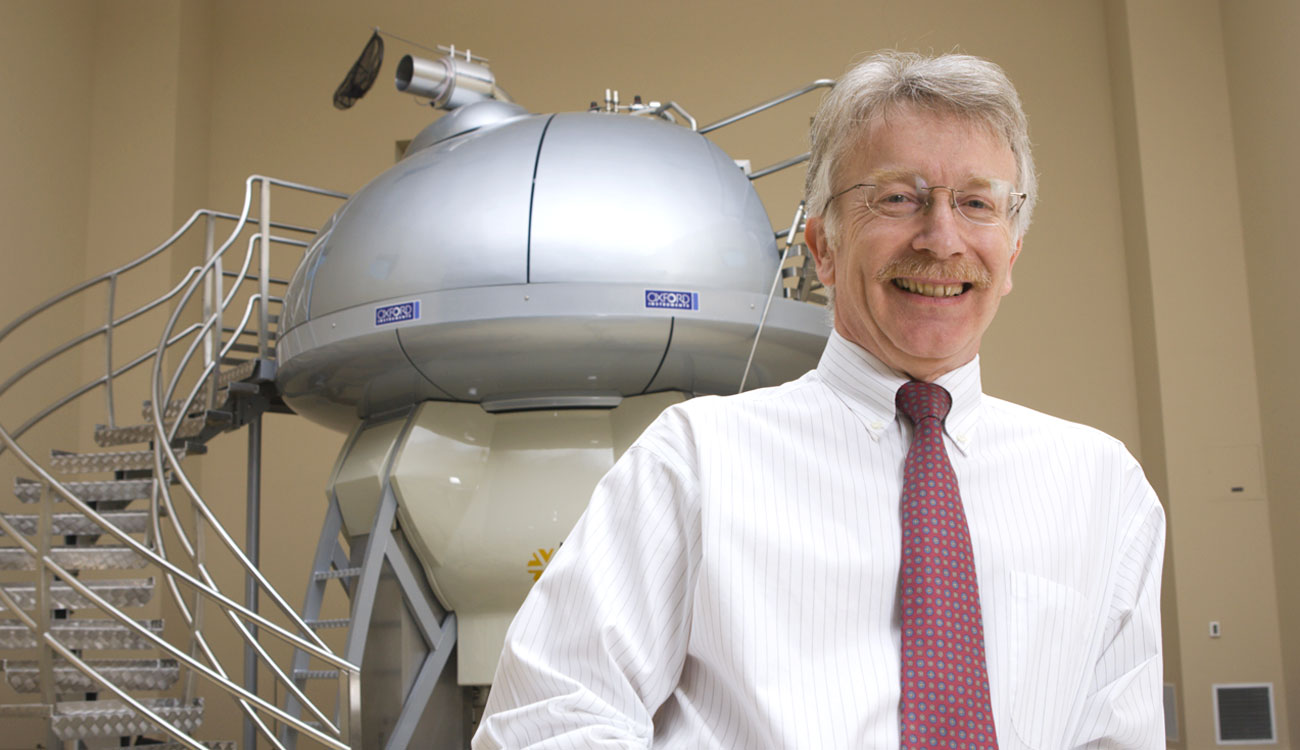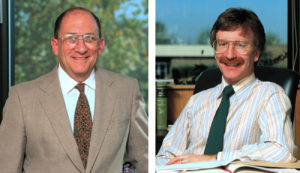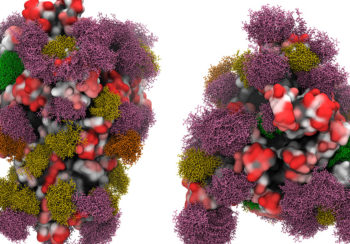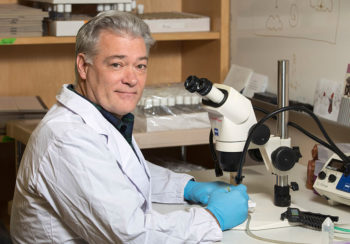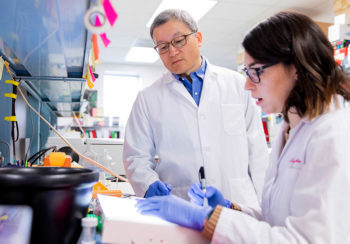The story of two pioneers
The center’s story starts in the mid-1980s in Boulder, Colorado, where two plant scientists realized that glycoscience could lead to key advances not just in their work but far beyond. At the time, the field barely existed. These two pioneers, Peter Albersheim and Alan Darvill, envisioned bringing together a critical mass of scientists to exchange ideas, attract sufficient grant money to buy specialized equipment, and continue adding the best people they could find. Both faculty at the University of Colorado, Albersheim and Darvill decided to look for an institution to help them achieve their vision.
“Two faculty members couldn’t support all the necessary technology, equipment and people that are needed to work in carbohydrates. They are very hard molecules to deal with,” said Alan Darvill, Regents Professor and director of the CCRC, which he and Albersheim co-founded in 1985. “We went to different universities trying to sell this concept.”
UGA was on the short list for two reasons: its esteemed plant biology program and the urging of Joe Key, a UGA professor who at the time happened to be on sabbatical in Boulder (and would later become UGA’s vice president for research).
“It came down to here, Cornell or the Scripps Institute in San Diego,” Darvill said. “We had to make a decision and, in the end, chose UGA because they seemed most supportive to growing a group of researchers in this developing area.”
So the two colleagues—along with 14 other scientists, Ph.D. students and postdocs, as well as five 18-wheelers of lab equipment—headed east.
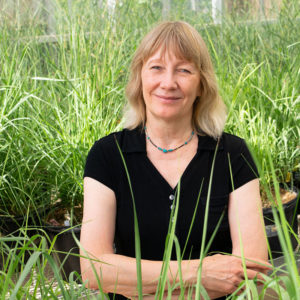
Debra Mohnen, professor of biochemistry and molecular biology, was a Ph.D. student in Switzerland when she read a paper Albersheim’s group had published in Science and immediately knew that she wanted to work with him. She was interviewed in Colorado for a postdoctoral position, but found herself moving to Athens instead.
“It was exciting,” she said. “Alan and Peter made an incredible pair working together. Peter was always pushing for everything and Alan was always getting us to look at problems in novel ways. I didn’t realize at first how unique it was. It was a hotbed of activity.
“It was absolutely clear to me,” she said, “there is absolutely no better place in the world, then and now, to do work on plant cell walls or complex carbohydrates.”
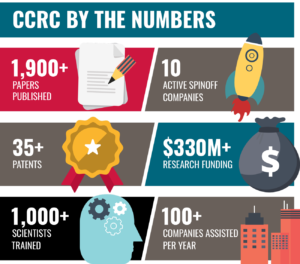
CCRC 2020
At the beginning, the center focused on plant-based carbohydrates but quickly expanded to animal and microbial carbohydrates.
“We are almost 300 people now,” Darvill said. “Thirty-five years ago we couldn’t have foreseen this. We are constantly looking to grow. We are lucky in this research field because it is continuously opening up new areas to get into, and that allows you to grow so we are not doing the same things we were doing 35 years ago.”
The support of the Georgia Research Alliance has been constant, from the beginning until now, and the Center now boasts three GRA Eminent Scholars.
“Bringing world-class talent serves as a magnet to attract other outstanding scientists, postdocs and students,” said Susan Shows, senior vice president of GRA. “CCRC gives Georgia a national and international reputation in a very important field of science.”
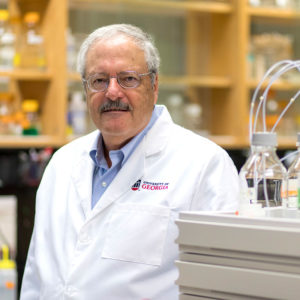
The most recent addition is Gerald Hart, who left Johns Hopkins University in 2018 to join the CCRC as a GRA Eminent Scholar. To focus on the research questions that interest him and to be in what he calls a “unique place” was an offer Hart simply couldn’t pass up.
“There’s no place like it on the planet, in terms of having so much expertise and quality science in glycobiology all in one place,” Hart said.
Many of the tools and technology available to researchers in glycoscience are the result of the work done at the CCRC over the last 35 years. And at the heart of that is its Analytical Services & Training unit, run by Parastoo Azadi, that is accessed by investigators and corporations from around the world. This resource also advises governmental and industry groups in best practices for glycan analysis and data interpretation that impact drug, vaccine and bioenergy development.
“Everything that the CCRC researchers learn in their research and any tools developed by the CCRC are incorporated into training courses, and they’re disseminated through these for others to use,” Azadi said.
“My group and I also collaborate constantly with others in the field, so there is constant feedback as to what is needed right now,” she said. “And I think CCRC has opened doors for other researchers with new tools.”
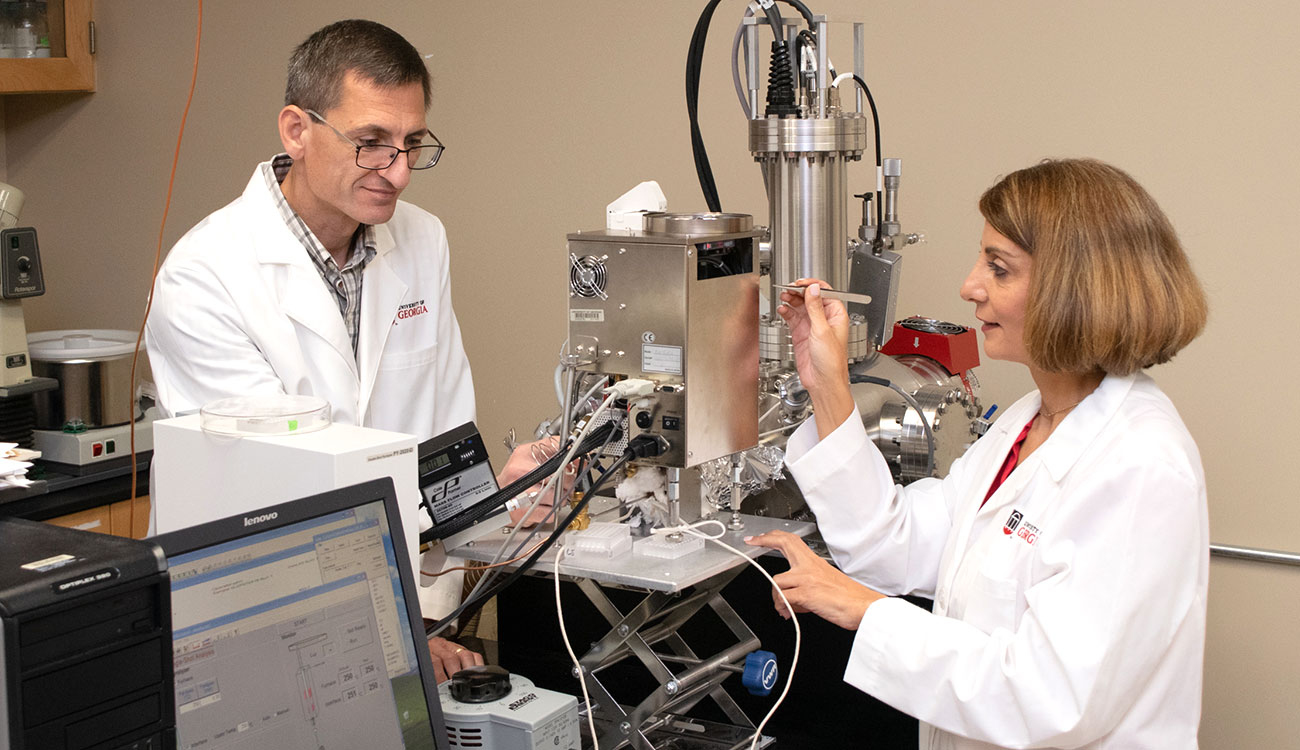
Plant carbohydrates: Driving sustainability
The importance of glycoscience to developing biofuels has been clear for decades, and a lot of the CCRC’s earlier work related to plant cell walls, which are key to biofuels because they determine how easily plant cells can be broken down for the energy they contain. But advances over the last 35 years have opened up new possibilities. Glycoscience could provide the way to make biofuels and biodegradable plastics a realistic alternative to fossil fuels.
Assistant Professor Breeanna Urbanowicz is interested in understanding how we can harness all the carbon and energy stored in a plant by learning more about the carbohydrates that are the building blocks of all plant cells.
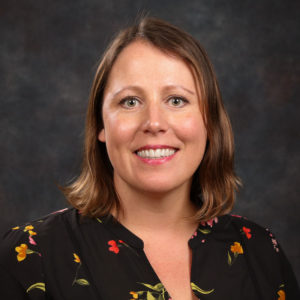
“If you think about all the carbon that has been fixed into plants, into the plant cell wall typically, it is the largest source of renewable carbon on Earth,” Urbanowicz said. “Our agricultural land is really our greatest natural resource in terms of biomass.”
Until now the only working source for biofuels was starch, the simplest of all complex carbohydrates. Starch from corn or soy, for example, is converted into ethanol and can be used as a biofuel. But these plants are used in food production and to feed livestock.
What if we could produce fuel from agricultural waste such as the stems of tomato plants or pulp from paper manufacturing? Researchers like Urbanowicz and Mohnen first need to figure out how to break them down into their component carbohydrates.
“The new concept, which I think is really starting to gain momentum, especially in the plant biology community and in the agricultural community, is this idea of a circular economy and reducing waste,” Urbanowicz said. “It’s the same concept when you’re working in your kitchen; maybe instead of throwing away your scraps of vegetables you want to make a nice stock with them or a soup. But we are processing agricultural materials, and we want to really utilize every single aspect of those materials to make value-added products and reduce our reliance on things like petroleum.”
An added bonus is that these component carbohydrates could also be used to create naturally biodegradable plastics. In collaboration with UGA’s New Materials Institute at UGA, Urbanowicz is focusing on a particular candidate for bio-based plastics, xylan.
“We are getting to the point where we have unprecedented control over how we can custom tailor polysaccharide structures—we are basically building carbohydrates to our liking,” she said.
“[COVID-19] research is a hard thing to do because it has to be done in a special biosafety-level facility. There are very few places in the world that have both the necessary instrumentation and access to such a containment facility to work with live viruses.”
– Michael Tiemeyer, CCRC co-director
A global challenge
Over the years, CCRC researchers have become leaders in identifying the role of carbohydrates in diseases, developing technology to study them, and helping to develop strategies, drugs and vaccines using this knowledge.
When COVID-19 hit, five different CCRC research groups quickly shifted their focus to study the novel virus that had quickly become a global menace. Identifying and understanding its patterns of glycosylation—the ways in which glycans and proteins interact on the virus’ surface—could prove critical to rapid development of vaccines, therapeutics and improved diagnostic capabilities.
“It was a logical thing for us to do,” Tiemeyer said. But it still required some quick thinking.
One key aspect researchers want to study is the diversity of the carbohydrates that cover the virus.
“That research is a hard thing to do because it has to be done in a special biosafety-level facility,” Tiemeyer said. “There are very few places in the world that have both the necessary instrumentation and access to such a containment facility to work with live viruses.”
UGA is one such place, and the first logistical challenge was to figure out how to move one of CCRC’s mass spectrometers to the Animal Health Research Center, a biosafety level 3 facility that allows scientists to study infectious microorganisms, parasites and toxins in a safe, contained environment.
CCRC faculty member and GRA Distinguished Investigator Lance Wells and other UGA collaborators are working to study the virus and its coating of carbohydrates that affect COVID-19’s ability to bind to a host.
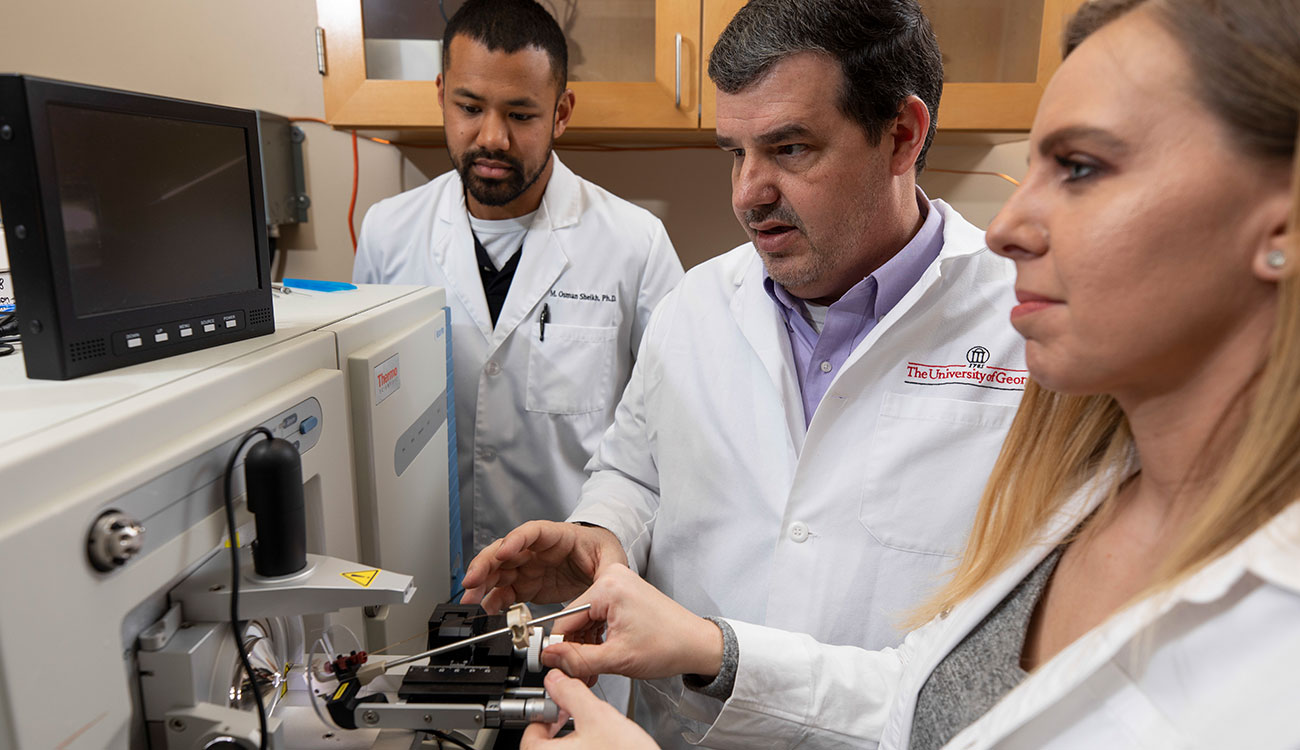
Rob Woods, professor of biochemistry and molecular biology, and his collaborators are applying 3D computational models they had created to study influenza to understand the novel coronavirus. Their models analyze the position of glycans on the virus’ surface that help it evade the host’s immune system.
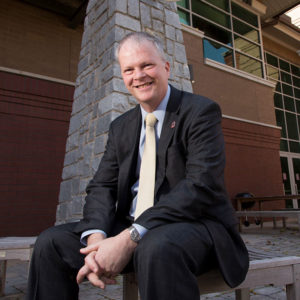
“We are searching for a pattern in how a virus ‘puts on’ these glycans—where do they attach?” Woods explained. “The aim is to help researchers to recreate in a lab a modified virus, with glycans in a similar position, and use this to develop a vaccine. When the virus comes along it will look very similar to the one created in the lab—it will not be identical, but it will be similar enough for our bodies to recognize it as a virus.”
When a virus tries to infect a cell, it first encounters a wall of glycans that covers the cell. Geert-Jan Boons, UGA Foundation Distinguished Professor in Biochemical Sciences, studies how viruses find a way through this carbohydrate forest. His lab creates complex carbohydrates, like the ones that surround human cells, to test whether viruses can bind to them or not. For the COVID-19 research they are focusing on a class of carbohydrate that they already had successfully produced.
“We knew from SARS1 that the virus binds to heparan sulfate, so when the SARS2 virus came along we jumped on that,” he said. His team is now investigating how SARS-CoV-2 interacts with this particular class of glycans and whether it holds clues as to how the virus infects cells. His collaborator, Mark Tompkins from the College of Veterinary Medicine, is ready to test any insights they gather on cells and animals.
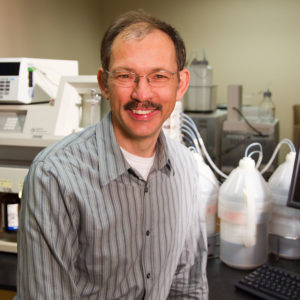
“Heparin [a type of heparan sulfate] is already a drug that we use in humans,” Boons said. “So if we could find a form of heparin that doesn’t cause coagulation but does inhibit the virus, it could be relatively quick to get approval for such a drug.”
Carbohydrates also play a role in how the COVID-19 infection progresses.
“The problem my team and I are trying to answer is how to know who should go into the hospital and who shouldn’t,” Tiemeyer said. “Just knowing how much virus someone has isn’t enough, because severity doesn’t necessarily correlate with viral load.”
His collaborators, respiratory biologists at the University of North Carolina, discovered that COVID-19 targets glands in the airway.
“The virus shuts down the production of mucus, and that is why you have a dry cough,” Tiemeyer said. “The idea is, we will develop a signature for a normal, functioning gland and then look at how that changes in infected people to gauge the severity of infection.”
It is not only glands that the disease affects. The metabolism of any infected cell will change, too, and traces of these changes can be found in the blood.
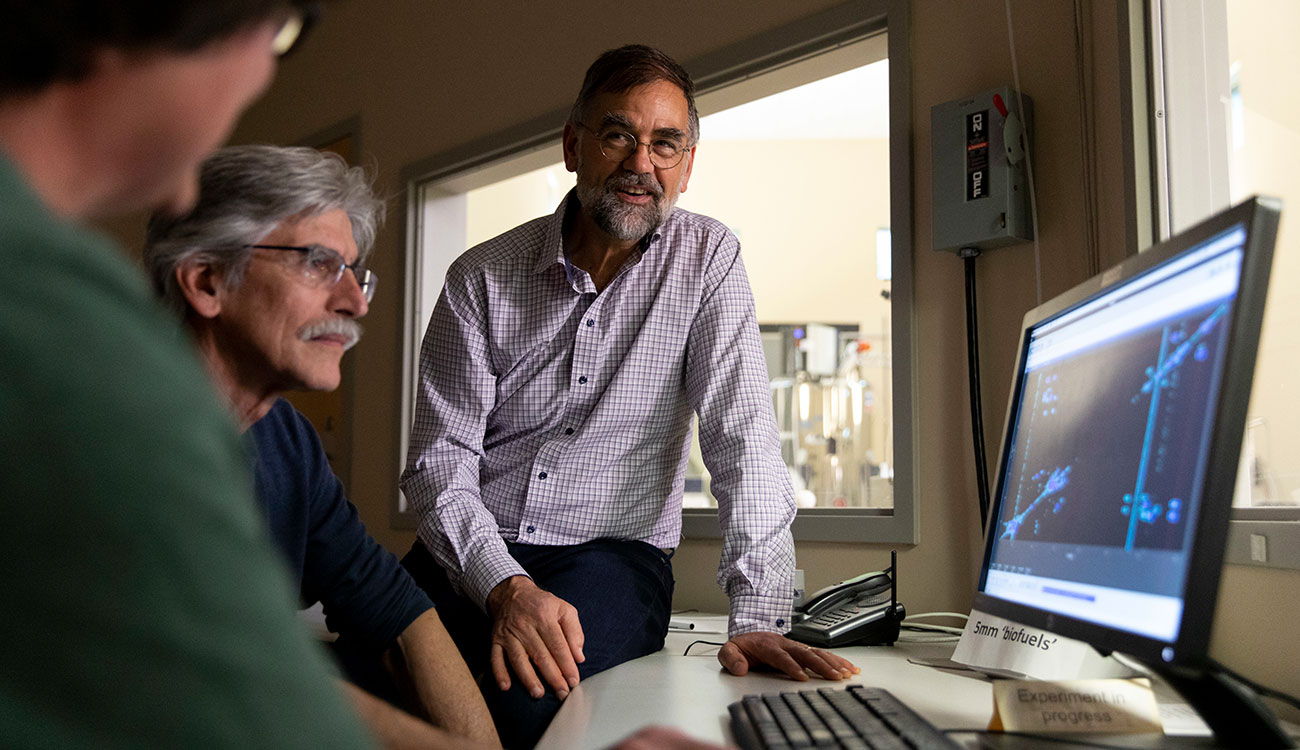
The starting point for Art Edison’s group is comparing blood samples from ferret models. Edison’s expertise lies in identifying small molecules in the blood called metabolites—basically any small molecule in our bodies, in our food, or produced by our cells, such as cholesterol and vitamins—using CCRC’s specialized facilities.
“The hardest step in doing the work we do is identifying the signals we measure, knowing what they are,” said Edison, GRA Eminent Scholar and professor of biochemistry and molecular biology and genetics. “Once we know what these unknown signatures are, they could be validated by other groups and other studies. At that point, tests could be developed for diagnostic facilities.”
Knowing how metabolites differ between healthy and infected ferrets would help biologists understand how the disease is making people sick and come up with ways to treat or block the disease. It can also help other researchers test vaccines or therapeutics for COVID-19, judging their effectiveness from clues the disease leaves in the blood.
Edison also stressed that if collaboration and knowledge sharing are a key part of what the CCRC does, they matter now more than ever.
“In this project, more than in any other in my career, we want to make measurements that will make a difference and share our data as soon as it is collected and we know it’s any good,” he said. “It is not the time for personal territory or trying to be the first at publishing.”
This jibes with the view that Richard Cummings, director of the Harvard Medical School Center for Glycoscience, has of how the CCRC works.
The CCRC occupies a 140,000-square-foot building designed for the interdisciplinary and equipment-intensive nature of carbohydrate science. The facility, which includes 32 1,200-square-foot research labs, was dedicated in 2004. (Photo by Paul Efland)
“It is an outstanding collegial atmosphere, sharing information, technologies and ideas,” he said. “There is a magical mixture of scientists at the CCRC that helps foster new innovative ideas, technologies and breakthroughs,” Cummings said. “COVID-19 is a good example of how the CCRC is adept at responding to the needs of society. They are able to focus their magnificent science on important questions and provide an outstanding collection of technologies to attack the problem of virus biology.”
That was the plan 35 years ago, when Darvill and Albersheim headed east from the Rocky Mountains to pursue their dream. Some of the faces have changed—Tiemeyer became co-director after Albersheim passed away in 2017—but the mission has not.
Said Darvill: “Bringing together interdisciplinary and rigorous scientists, working with them to get the resources and shared high-end equipment they need, and to then stand back and watch the discoveries grow is exactly what Peter and I dreamed of.”



